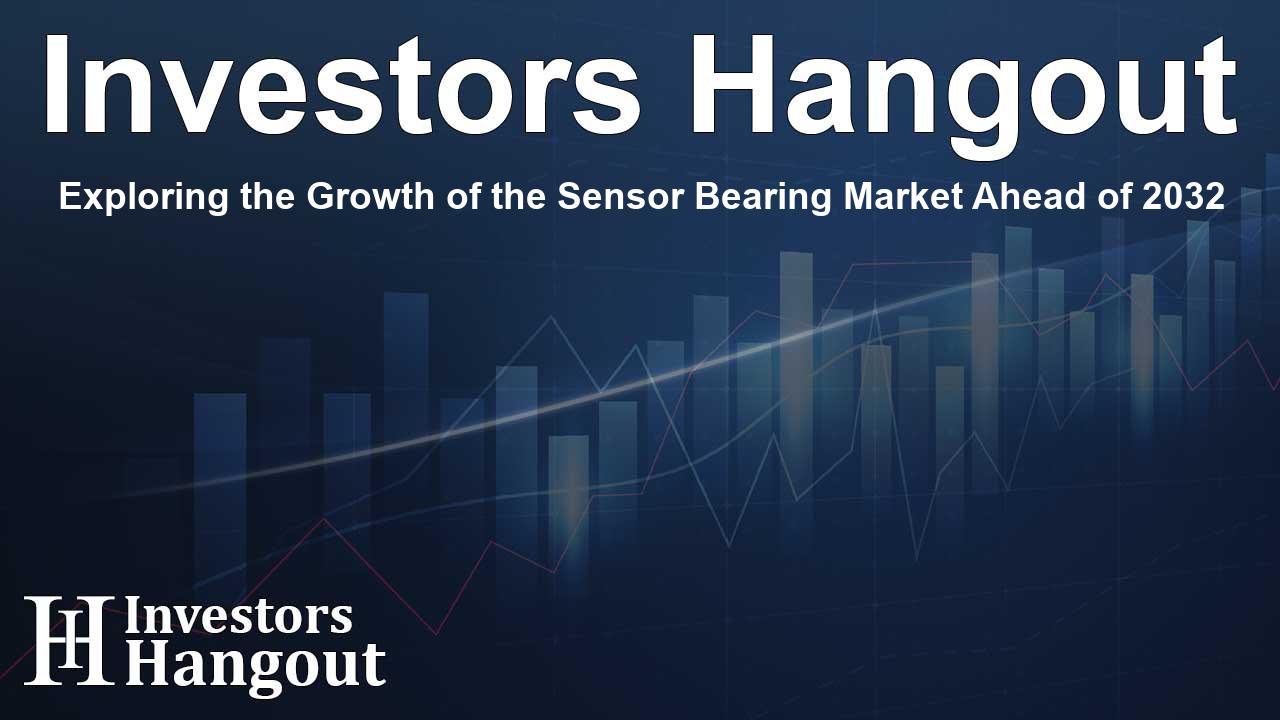Exploring the Growth of the Sensor Bearing Market Ahead of 2032

The Future of the Sensor Bearing Market
The sensor bearing market is on a remarkable journey, showing substantial growth with predictions pointing towards a potential valuation of USD 12.20 billion by 2032. The driving factors behind this trajectory include an increasing demand for cutting-edge sensor technologies, particularly in the realms of electric vehicles and industrial automation. These innovations are pivotal, enhancing operational efficiency, safety protocols, and predictive maintenance capabilities across various sectors.
Current Market Landscape and Projections
In terms of market dynamics, the sensor bearing space was valued at approximately USD 7.51 billion in 2023 and is estimated to grow at a compound annual growth rate (CAGR) of 5.67% from 2024 to 2032. This growth narrative is underpinned by the automotive sector's continuous expansion, notably driven by advancements in electric vehicles and enhanced industrial automation.
The U.S. Market’s Surge
The U.S. sensor bearing market, which stood at USD 1.42 billion in 2023, is projected to reach USD 2.42 billion by 2032, exhibiting a lavish CAGR of 6.22% during the same period. This market is predominantly supported by the automotive industry's innovations, where sensor bearings play a crucial role in improving vehicle safety and efficiency.
Key Players and Innovations in the Field
Several prominent players are making their mark in the sensor bearing market, including:
- Harbin Bearing Manufacturing Co., Ltd
- Schaeffler Technologies AG & Co. KG
- Wafangdian Bearing Co. Ltd
- The Timken Company
- ABB Group
- NTN Corporation
- JTEKT Corporation
- Fersa Bearings
- Mageba SA
- NSK Corporation
- Nachi Europe GmbH
- Homson Industries Inc.
- BRTEC
Market Insights
As we delve deeper into the market trends, key attributes include:
- Market Size in 2023: USD 7.51 Billion
- Market Size by 2032: USD 12.20 Billion
- Forecast Period: 2024-2032
- Key Segments: Functionality, Application, End Use
- Key Drivers: Predictive maintenance and IoT integration
Functional Segments Leading the Market
Within the sensor bearing market, the functionality of speed sensors has taken the lead. In 2023, this segment captured 55.64% of the overall market revenue, largely due to its essential role in automotive, industrial, and aerospace applications. These speed sensor bearings are critical for performance and safety in vehicles, particularly in anti-lock braking systems.
Application Trends in the Industry
The ABS application segment is a heavyweight, constituting 40.38% of the sensor bearing market in 2023. The growth in this area is aligned with heightened vehicle safety standards and regulatory compliance concerning braking systems, which are significant factors driving demand for ABS sensor bearings.
Global Distribution and Market Trends
Geographically, the Asia Pacific region is a dominant player in the sensor bearing market, accounting for 45.46% of the total market in 2023. This preeminence stems from rapid industrialization and robust manufacturing practices in key nations like China, Japan, and India. The automotive sector in these nations continues to escalate demand for sensor bearings.
North America's Growth Prospects
Meanwhile, the North American market is projected to experience phenomenal growth at a CAGR of 6.60% as the demand for sensor bearings in the automotive and aerospace sectors expands. The incorporation of smart manufacturing principles and enhanced digital transformation strategies are pivotal for boosting sensor-bearing applications.
Final Thoughts
The sensor bearing market is evidently on the brink of exponential growth driven by innovation in technology, particularly within the electric vehicle and industrial automation sectors. Understanding these dynamics not only equips stakeholders to make informed decisions but also underscores the market's potential as it approaches the USD 12.20 billion milestone by 2032.
Frequently Asked Questions
What is the projected market size of the sensor bearing market by 2032?
The sensor bearing market is expected to reach USD 12.20 billion by 2032.
What are the main drivers of growth in the sensor bearing market?
Key drivers include the rise of electric vehicles, industrial automation, and the increasing demand for predictive maintenance technologies.
Which sector primarily supports sensor bearing innovations?
The automotive sector primarily supports advancements in sensor bearing technologies, improving safety and operational efficiency.
Who are the major players in the sensor bearing industry?
Key players include Schaeffler Technologies AG, The Timken Company, and ABB Group among others.
What geographical region leads the sensor bearing market?
The Asia Pacific region leads the market, bolstered by strong manufacturing capabilities and automotive production trends.
About The Author
Contact Ryan Hughes privately here. Or send an email with ATTN: Ryan Hughes as the subject to contact@investorshangout.com.
About Investors Hangout
Investors Hangout is a leading online stock forum for financial discussion and learning, offering a wide range of free tools and resources. It draws in traders of all levels, who exchange market knowledge, investigate trading tactics, and keep an eye on industry developments in real time. Featuring financial articles, stock message boards, quotes, charts, company profiles, and live news updates. Through cooperative learning and a wealth of informational resources, it helps users from novices creating their first portfolios to experts honing their techniques. Join Investors Hangout today: https://investorshangout.com/
The content of this article is based on factual, publicly available information and does not represent legal, financial, or investment advice. Investors Hangout does not offer financial advice, and the author is not a licensed financial advisor. Consult a qualified advisor before making any financial or investment decisions based on this article. This article should not be considered advice to purchase, sell, or hold any securities or other investments. If any of the material provided here is inaccurate, please contact us for corrections.
